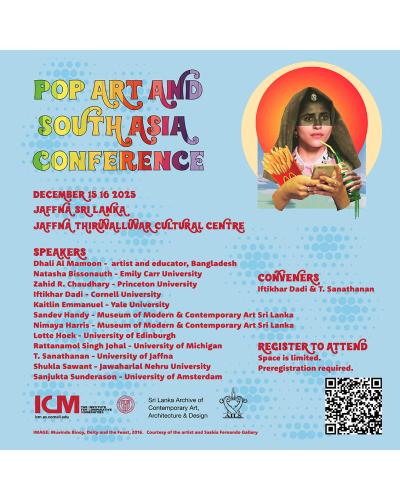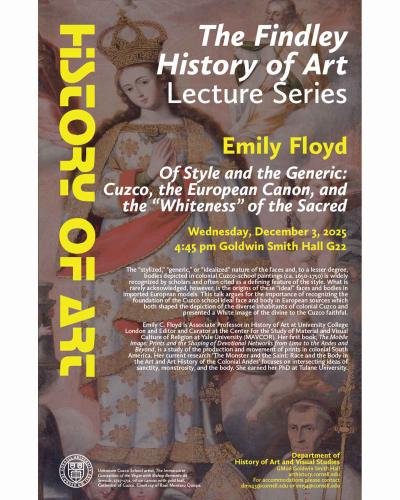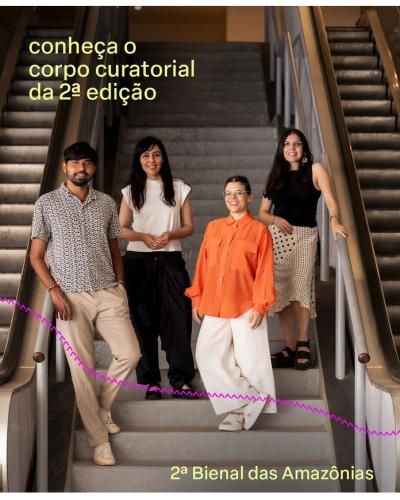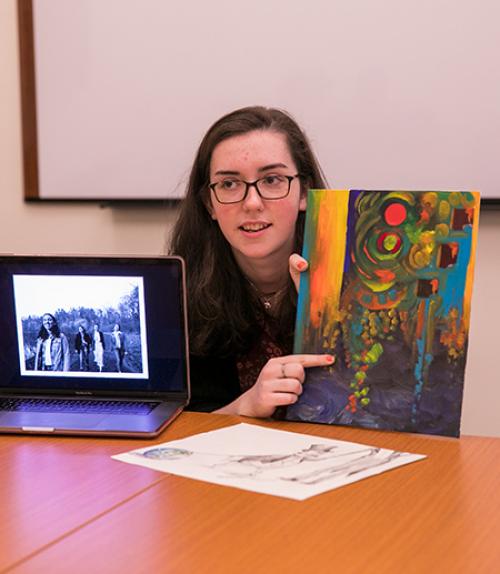From the time-tested technique of impressing cuneiform characters into clay to today’s advanced but often short-lived technologies, students in a new media studies foundation course spent the spring semester delving into how media formats have shaped human lives throughout history.
“Thinking Media,” taught by Roger Moseley, associate professor of music and CIVIC media fellow, featured an array of guest speakers from across Cornell, including faculty from Asian studies, classics, communication, English, history of art, information science, performing and media arts, and science and technology studies.
“Media provide us with models and metaphors for making sense of the world and ourselves,” Moseley said. “For millennia, media have not merely formatted, transmitted and stored information, but shaped the contours of the human imagination. It’s been fascinating to explore the global media landscape from contemporary and historical perspectives that challenge preconceptions of what media do and how they can be understood.”
During a recent guest lecture, Steven Jackson, associate professor of information science and science and technology studies, spoke about a new technology repair movement that responds to the corporate tactic of planned obsolescence and the environmental and ethical costs of media and technology writ large.
“Starting the story of technology and media with repair is meant to change the way we think about this area,” Jackson said. “When people think about ethics in technology, they often think about privacy, but there’s a whole other story about ethics that starts before anything ever shows up in code or hardware and continues way after the normal lifespan of these items.”
“Thanks to the generosity and expertise of our guest faculty, we’ve learned how to think about writing, photography, cinema, sound recording, radio, TV, computation, and social media from multiple disciplinary angles,” said Moseley. “Along the way, we’ve discovered surprising points of contact between wax seals and photographs, barrel organs and computers, and algorithms and conceptual art.”
Students in "Thinking Media" ranged from communication and history majors to others interested in information science and computer science.
“I thought I knew the scope of media, but this course introduced me to new ways of thinking about it,” said Gillian Harrill ’22, a communication major. “For instance, María Fernández, associate professor of art history, showed us how the media formats chosen by cyberfeminists were integral to their articulation of countercultural messages.”
The class is the first foundational course in a new media studies initiative. It will be supplemented by a range of courses offered across multiple departments under the rubric of “Making Media.” The two-semester sequence will offer a unique humanistic perspective on the challenges facing the world and the cultural techniques of “thinking through doing.” The interdisciplinary sequence is envisaged as the anchor of a proposed minor in media studies.
Both classes are initiatives of the interdisciplinary Media Studies Working Group, which also brings speakers to campus, offers support for media-related graduate-student research and supports the efforts of “Media, Material Cultures, and the Senses,” one of two interlocking projects in the provost’s CIVIC (Critical Inquiry into Values, Imagination and Culture) initiative.
Students interested in pursuing creative projects or conducting more extensive research could take “Thinking Media” for an extra credit. Nine students selected this option, and the extra-credit project meetings took place in the newly refurbished Media Classroom in Uris Library.
Harrill created a six-minute film, “The Means of Meaning,” which uses a structure reminiscent of a collage to explore meaning making through tiny parts like the alphabet and binary code. She said her film was inspired by media she encountered throughout the class, including the surreal short film “Too Many Cooks” (discussed by PMA professor Nick Salvato) and the Kroch Library exhibition “Mixed Media: The Interplay of Sound and Text,” curated by Julia Gardner.
Stephen Newcomb ’21 presented “Tower Offense,” a digital game he has been co-developing this semester while also acting as composer and sound designer. Newcomb created medieval-styled music for his soundtrack and recorded an assortment of sounds – rocks falling and dining hall students chatting – to use as sound effects.
“Sound is a huge part of the immersive quality of the game,” he said, adding that the class taught him to focus on the interactive experiences afforded by media.
Isabelle McDonald ’22, a history of art and fine arts major, experimented with different modes of art for her project, inspired by Mussorgsky’s “Pictures at an Exhibition,” which McDonald performed as a member of the Cornell Symphony Orchestra earlier in the semester. From oil paintings and political cartoons to photographs and acrylic abstracts, McDonald challenged herself to tackle media that went beyond her normal styles of expression.
During project meetings, McDonald played different segments of Mussorgsky’s work for her classmates, then asked for the visual impressions they “saw” while listening to the piece. After that, she unveiled the artwork she had created for the same work, and was often surprised by the similarities between the two.
“I took things I knew from my color theory and art classes and combined that with what I knew about music,” she said, adding that she didn’t view the images that inspired Mussorgsky until after she had completed hers. The products of McDonald’s offer suggestive insights into the relationship between sound, image, and translation.
Over the course of the semester, “Thinking Media” drew on Cornell’s rich holdings in media and material culture, including its reproductions of ancient sculptures and inscriptions, its collections of keyboard instruments and the Rose Goldsen Archive of New Media Art. The course will next be offered in Spring 2020, when it will be taught by Erik Born, assistant professor of German studies and CIVIC media fellow.
“Both inside and outside the classroom, it was exhilarating to form connections among the diverse body of texts, ideas, objects, and practices that we encountered. And it was inspirational to witness both our faculty’s collective brilliance and the students’ burgeoning capacity to think creatively and critically about the past and future of the media ecologies that envelop us today,” Moseley said.





